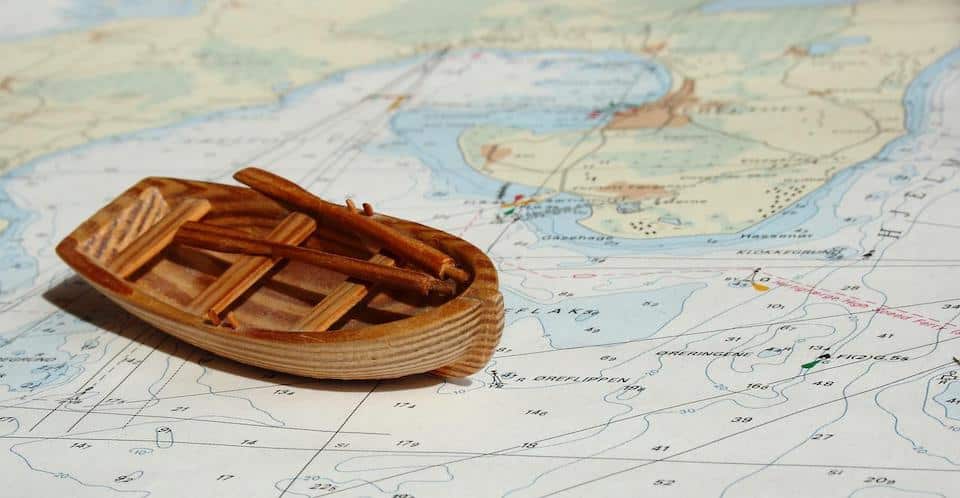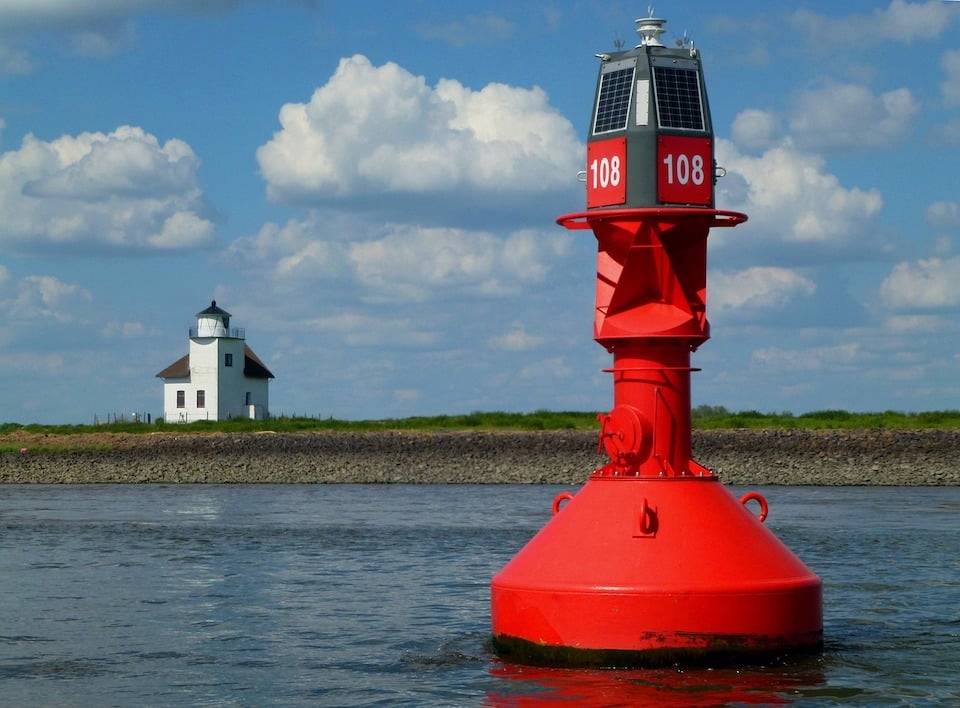Barb Hansen offers some sound advice for those new to the boating life. Find out why being a boat navigator is much more involved than you may think. ~ The Editors

Just before the 4th of July I read an article in one of our local community newspapers that correctly forecast the many “new boaters” that will be on the water then and in the future. This is – as I have noted previously – one of the results of the global pandemic. While I am happy to see our cruising family grow, there’s also a side of this that should be of concern to all of us who enjoy cruising.
That is, some of these new cruisers have no idea what they are doing! I am reminded of the time Vic and I were out in our boat some time ago when a couple on another small runabout came up to us and asked for help in finding their way to where they wanted to go. They had no nautical charts onboard, but they had a AAA road map!
This scenario is not only dangerous for the people who don’t know what they are doing, but also for the rest of the boaters on the water. Let me remind everyone, especially new boaters, navigating a boat is nothing like “navigating” a vehicle on land! No roads, just a few signs like basic navigational markers and some landmarks. You need to know how to get where you want to go and return, plus where you are at any given time in case of an emergency or to let others know where you are. Also, you need to know what to do when you come to an intersection with another boat, which boat has the right of way, how to safely operate on the open waters and more.

To navigate your boat, decide on the method you will use: electronic or traditional navigation. While electronic navigation is probably easier, it means that an electronic device has to work! For example, if it won’t power up then you have no device – and no electronic navigation. So, it’s good to know both electronic and traditional methods just in case.
If you’re using electronic navigation, you will want to study the systems on your own vessel. These days, most owners’ manuals are online. In addition, there are often YouTube videos available for additional instruction.
it’s important to have a basic understanding of the tools you need for traditional (analog) navigation (just in case those electronics fail while you are on board) and to keep those tools – a compass, charts for the waterways you travel, parallel rulers and dividers – on board at all times.

The compass tells you in which direction you are headed; charts are maps of the water and waterway; parallel rulers enable you to “walk” them across a chart, enabling you to know the compass bearing you need to steer your boat on course, and dividers used to measure distance between any two points on the chart. With these tools you can determine where you are, where you want to go and the course to follow to get to your desired destination
Make sure your charts, whether hard copy or electronic, are the most current available. Also, you will find it useful to use both electronic and traditional methods of navigation on a regular basis. As the old adage says, “Practice makes perfect!”
For more information on navigation and any other subjects related to cruising, check the available online resources.
In addition to learning how to navigate your boat, I believe it is also safe and wise to:
· Not mix alcohol with navigation
· File a float plan so others will know where you are headed and when you plan to return
· Let your crew know where safety gear is located and what to do if an emergency occurs
· Have all on board wear life jackets and make sure the captain is “wearing” the kill switch/safety lanyard when at the helm
· Know the waters so you are familiar with sandbars and currents, as well as any other obstacles
Again, I am happy to see our cruising family grow, but I ask that all new members be properly prepared so we all benefit and enjoy our time on the water. Happy Boating and be safe!
Barb Hansen manages Southwest Florida Yachts, yacht charters and Florida Sailing & Cruising School, a liveaboard yacht school. Contact her at info@swfyachts.com
The Women's Outdoor News, aka The WON, features news, reviews and stories about women who are shooting, hunting, fishing and actively engaging in outdoor adventure. This publication is for women, by women. View all posts by The WON
Hi Barb,
Great post. In CT motorized boat operators are required to be licensed after a 4 hour course. A separate course and license is required for a PWC (personal water craft). About 25 years ago, my wife and I took a full blown Coast Guard boating safety course offered through our town’s adult education, which got us our state licenses. It was one night a week, 4 hours per night, for 8 weeks. We learned about engines, fueling, ropes and knots, trailers, fire safety, radios and electronics, all aspects of civilian navigation, charts, tides, etc. etc. It was a truly comprehensive course and I recommend everyone with a boat make the time and pay for (it was not expensive at all) such a course. You will get so much more out of it than a state minimum requirement, if there is one at all. Unfortunately, the people who really need such a course have more money than brains, and buy a large powerful boat with little to no clue what they are doing. I know… I see it all the time on the water. In the summer of 2020 I was almost killed in my kayak right in front of my wife in R.I. by a power boat that was sitting low in the stern with no one on the bow as look out. Luckily I paddled like a madman and he ran over the rear of my kayak. Even after he stopped, he was blaming me for getting in his way, instead of knowing the rules of navigation. I told him he was lucky it was high tide, or I would be dishing out a violent response to his stupidity. Actually, had it been low tide, he would not have even had his boat in that area. He knew he was wrong, because he kept repositioning his boat so I couldn’t get his registration number.
Charts and compasses don’t need batteries or signals to work. We run into the same issue on land in the fire service during search and rescue. I learned land navigation in the military, so a lensatic compass and a topographical map is all I need. Most people today can’t even read a road map, because they are so reliant on “turn-by-turn” GPS.
Women’s Outdoor News is one of my regular reads.